Air heating of a private country house: principles of the device, selection of equipment and calculation
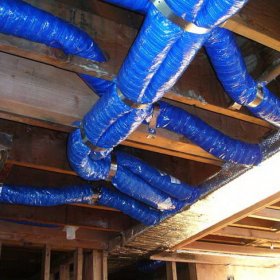
Advanced America and Europe have long been safely heating their homes with air, while when designing a heating system, water is most often traditionally chosen. While deciding on air heating of a country house, you can get 90% efficiency, and from a water system - a maximum of 60%. Why else is heating with air so attractive? Let's get it right.
Content
How does such a system work?
Air heating is very practical. Happy owners who heat their homes in this way note undeniable advantages:
- Absolute security. Highly sensitive automation clearly controls all processes. At the slightest risk of leakage or other danger, it instantly blocks the equipment. In addition, there are no pipes filled with coolant in the system, therefore, in principle, their breaks, leaks, etc. are impossible. troubles.
- High heating rate. It takes 20 to 40 minutes to fully warm up the room, even if the initial temperature in the house was negative.
- Cost-effectiveness. Low power consumption, high efficiency and the absence of intermediate coolants make air private house heating extremely beneficial.
- Reliability and durability. Subject to competent design, installation, regular maintenance and necessary repairs, the system will last at least 20 years.
- Easy operation. Automatic control of the processes of starting, stopping and changing modes allows you to easily adjust the temperature in the house and at the same time insures against possible errors.
- Affordable installation cost and a fairly quick payback period.
- Aesthetics. The absence of the usual batteries in the room makes it possible to install windows of almost any size, frees up space and opens up opportunities for design experiments.
Traditionally, air heating systems involve the use of a heat generator. The air pumped into the heat exchanger warms up to 45-60 ° and, moving through the air ducts, heats the room. The cooled air is returned to the heat generator through gratings in the floor or through return ducts.
Air heating can be done using several options:
- heat pump;
- a gas burner using both balloon and main gas;
- hot water from a centralized boiler;
- diesel burner.
About how the heat pump is arranged, and whether it is possible to make it yourself, read in our material:https://aquatech.tomathouse.com/en/otoplenie/alt_otoplenie/teplovoj-nasos-vozdux-vozdux.html.
The average air flow in the system is from 1,000 to 3,800 cubic meters.m per hour, the pressure is 150 Pa. In large rooms, heat loss from long ducts can occur. In such cases, it is worth considering the arrangement of several heat generators that operate without air ducts. According to experts, the length of the main duct should not be more than 30, and branches - 15 m.
Using the system exclusively for space heating is somewhat irrational, therefore, most often an air cooling unit is introduced into the device, from which an external air conditioning unit is allocated. Thus, the system combines heating and air conditioning, allowing you to maintain a comfortable temperature in the house at any time of the year. In addition, you can use additional equipment: a humidifier and an air sterilizer, creating a unique healthy microclimate in the rooms.
Arrange the air heating of the cottage with:
- Natural ventilation. The easiest option is when air rises due to initial heating. He enters the rooms through the air ducts, heats them and returns to the heat exchanger. The main disadvantages of natural ventilation are clearly manifested in the case of additional intake of cool air through doors or windows. In this case, cold air, which is larger, accumulates in the lower part of the room, creating a skew of the temperature regime and interfering with the normal functioning of the system.
- Forced ventilation. Air circulation is provided by a fan that creates pressure in the system. The room warms up much faster due to the greater speed of air movement. Also in devices with forced ventilation it is easier to regulate the temperature in the rooms. Noise coming from air ducts can be considered a small design flaw.
Rules for the selection of basic equipment
Heat generators for air heating systems can operate on different fuels. It is important to choose for your home the most suitable option in all respects. It can be liquid or liquefied fuel, natural gas. Manufacturers have provided possible transitions from one type of fuel to another. To do this, it will be enough just to replace the burner, as is the case with diesel fuel and gas, or to install a replaceable nozzle with a different diameter of the passage openings when switching from liquefied gas to natural gas.
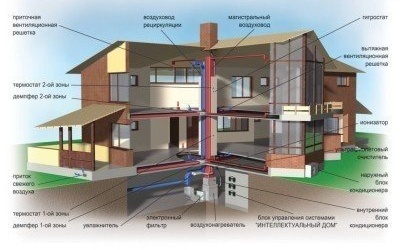
A holistic system consists of a huge number of components that must be correctly selected for correct operation with each other (click on the image to enlarge)
A liquid fuel system will require additional installation of filters, a fuel storage tank and a pipeline to it. Additional equipment will also be required for a liquefied gas plant. If it is intended to use cylinders, it will be necessary to equip a room for their storage. Alternatively, consider the design of a tank for gas dug into the ground, the so-called gas tank. Only natural gas systems will not require additional devices.
Ducts can also be different:
- Round. They have a small aerodynamic drag, which slightly increases the overall efficiency of the system. They are fastened together with clamps and studs. The inner diameter of the pipes varies from 100 to 200 mm.
- Rectangular Most often they are installed in ducts with a large cross section. They fit more harmoniously into the interior, so they are preferred in the arrangement of heating systems in residential buildings.
Both types of structures are fixed to the ceiling using anchors. If air ducts have to be laid through unheated sections, they must be insulated to avoid heat loss. When installing structures between the floors, a special metal cover is mounted, larger than the air duct.Be sure to carry out thermal insulation of the system. At the sections of the outlet of the duct into the room, air distributors are installed, as well as air intake devices.
How to make a preliminary calculation?
In fact, it is very difficult to independently calculate air heating. Often, only specialists can do this. The calculation determines:
- heat losses for each room in a heated house;
- type of heater and its power, which should be comparable with the amount of heat loss;
- the required amount of heated air, taking into account the power of the heater;
- desired diameter of air channels;
- pressure loss in an air installation, etc.
The right decision will be to order an example of calculating air heating at home from specialists. It is likely that as a result, engineers will offer several options, it remains only to choose the most acceptable one from them.
Read about the advantages of an air heating system over others in our comparative review:https://aquatech.tomathouse.com/en/otoplenie/raschety/otoplenie-chastnogo-doma.html.
Heating with air is economical, safe, extremely easy to use and at the same time durable and reliable. Not surprisingly, it is gaining in popularity. However, it is quite difficult to arrange air heating with your own hands. Possible errors can lead to unpleasant consequences in the form of a draft in the rooms, noise, overheating of equipment, etc. Those who choose this practical system should seek the help of professionals. A competently designed and high-quality installed system will please you with warmth in the house for more than a dozen years.
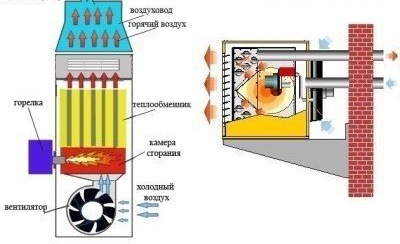
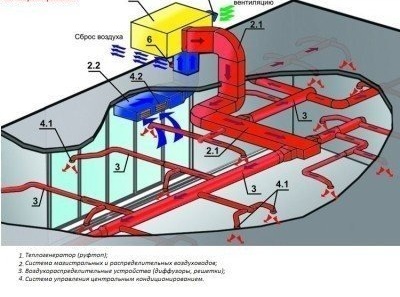
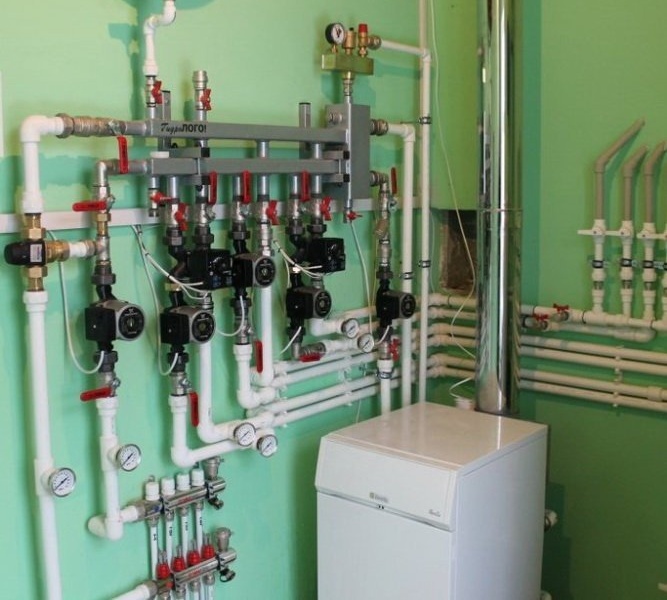
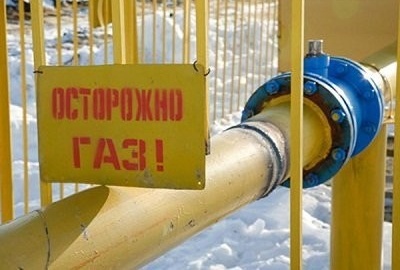

4 comments